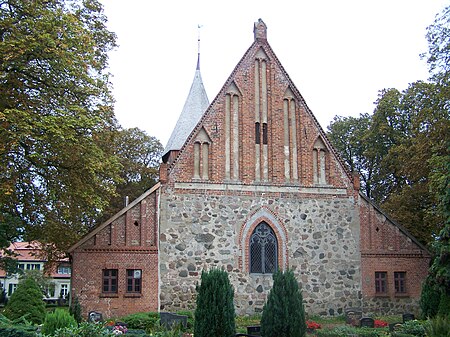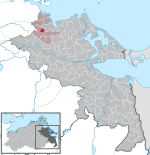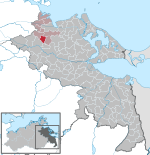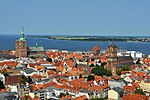The Faculty of Philosophy of Greifswald University (German: Philosophische Fakultät der Ernst-Moritz-Arndt-Universität Greifswald) is one of five faculties and the founding faculty of the University of Greifswald in Greifswald, Germany.
The faculty's research and teaching focuses on languages and cultures of Northern and Eastern Europe. Subjects, such as Latvian and Lithuanian Studies, Slavic Studies, Finnish Studies (including Estonian Studies) and Scandinavian Studies are offered by only a few other universities in Germany.
Other classic disciplines, such as German Studies, English Studies and studies of History, Political Science, Philosophy, Psychology, Church Music and Music are offered as well. The Caspar-David-Friedrich-Institut, which was named after the 19th-century German Romantic landscape painter Caspar David Friedrich, who was born in Greifswald and received his first artistic lessons here, offers degrees in Fine Arts and Art History.
Like many other universities in Germany, the Faculty of Philosophy (Philosophische Fakultät) of Greifswald University is now offering bachelor's and master's degree courses to cater to the wider interests of students. The undergraduate programmes have course duration of three years; the postgraduate programmes have course duration of two years.
In addition to the usual course programmes, the Faculty of Philosophy founded the Centre of the Middle Ages (Mittelalterzentrum) in 1995. The Mittelalterzentrum is an association of 20 academics of all faculties doing interdisciplinary research and providing students and scholars with lectures concerning life and culture in the Middle Ages. It is further a programme which is not only open for graduates and professors, but for anyone who is interested in the study of different points of view on the Middle Ages, such as literary, historical, medical or any other point of view. Each year, associates of the Mittelalterzentrum organize a series of lectures, held by scholars from Greifswald University and other renowned universities.
Apart from wide range of course offers provided by the Faculty of Philosophy, the faculty is greatly interested in organizing cultural events, such as Nordischer Klang, PolenmARkT and the Bachwoche.
The international festival Nordischer Klang, which presents a programme filled with different events ranging from Jazz and Classic concerts to art exhibitions, is associated with the Department of Nordic and Finnish Studies.
The PolenmARkT, on the other hand, focuses on the culture of Poland and is co-organized by the Department of Modern Languages, and in particular by the division of Slavic Studies. Each year for two weeks people are invited to attend Polish lectures and readings about Poland and its people, as well as several movies and documentaries and of course, as the name suggests, a market with typical Polish goods.
The Bachwoche, associated with the Department of Music and Church Music, is anotherfestival and dedicated to the German composer, organist, harpsichordist, violist and violinist Johann Sebastian Bach, whose sacred and secular works for choir, orchestra and solo instruments drew together the strands of the Baroque period. During that week people are able to enjoy concerts and church services where some of Bach's more or less famous works are being played by the university's music ensembles, as well as lectures about Bach, his music and choir practices to sing along.











